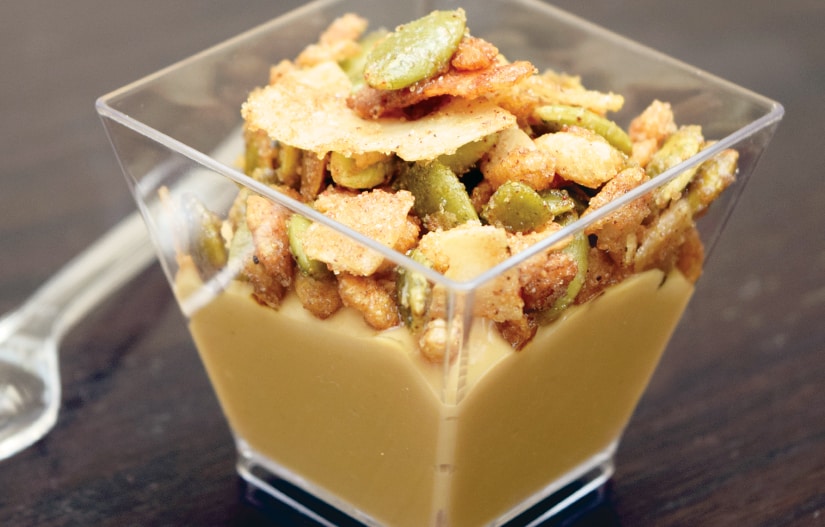Adhesion

The proteins in egg products, specifically in the whites, assist with adhesion and ingredient binding. When they are heated or exposed to acid, they coagulate, causing the egg product to change from a liquid to a semisolid or sold. When the proteins solidify, they function as an adhesive, connecting ingredients or food components with each other.
An egg wash for example, can be brushed onto the surface of baked foods in order to hold topically applied nuts or seeds. The proteins help these decorative elements adhere to the surface of the baked good during baking. An egg wash can also help control moisture depending on the type of egg mixture used for the egg wash. Egg yolks or whole eggs will seal in moisture while egg white proteins will draw moisture out.
In addition, egg products often are added to batters used for breaded foods to help the breading adhere to the substrate. Research suggests that batter with protein levels of 10 to 15 percent tend to be the most effective binding agent.1 Adding seasoning or flavorings to the egg wash helps ensure even distribution of the seasoning.2
The chemistry of egg protein coagulation explains how egg products assist with binding ingredients in multi-component prepared food system, preventing products from crumbling, losing their shape or falling apart.
References
- McKee S. (2012). Prepared Foods: How Egg Products Contribute to Mouthfeel and Texture, AEB training module, YouTube (Accessed May 22, 2017) 2. Brown A. (2011). Understanding Food: Principles and Preparation, Fifth Edition, Cengage Learning, Stamford, Connecticut, USA
- Brown A. (2011). Understanding Food: Principles and Preparation, Fifth Edition, Cengage Learning, Stamford, Connecticut, USA
